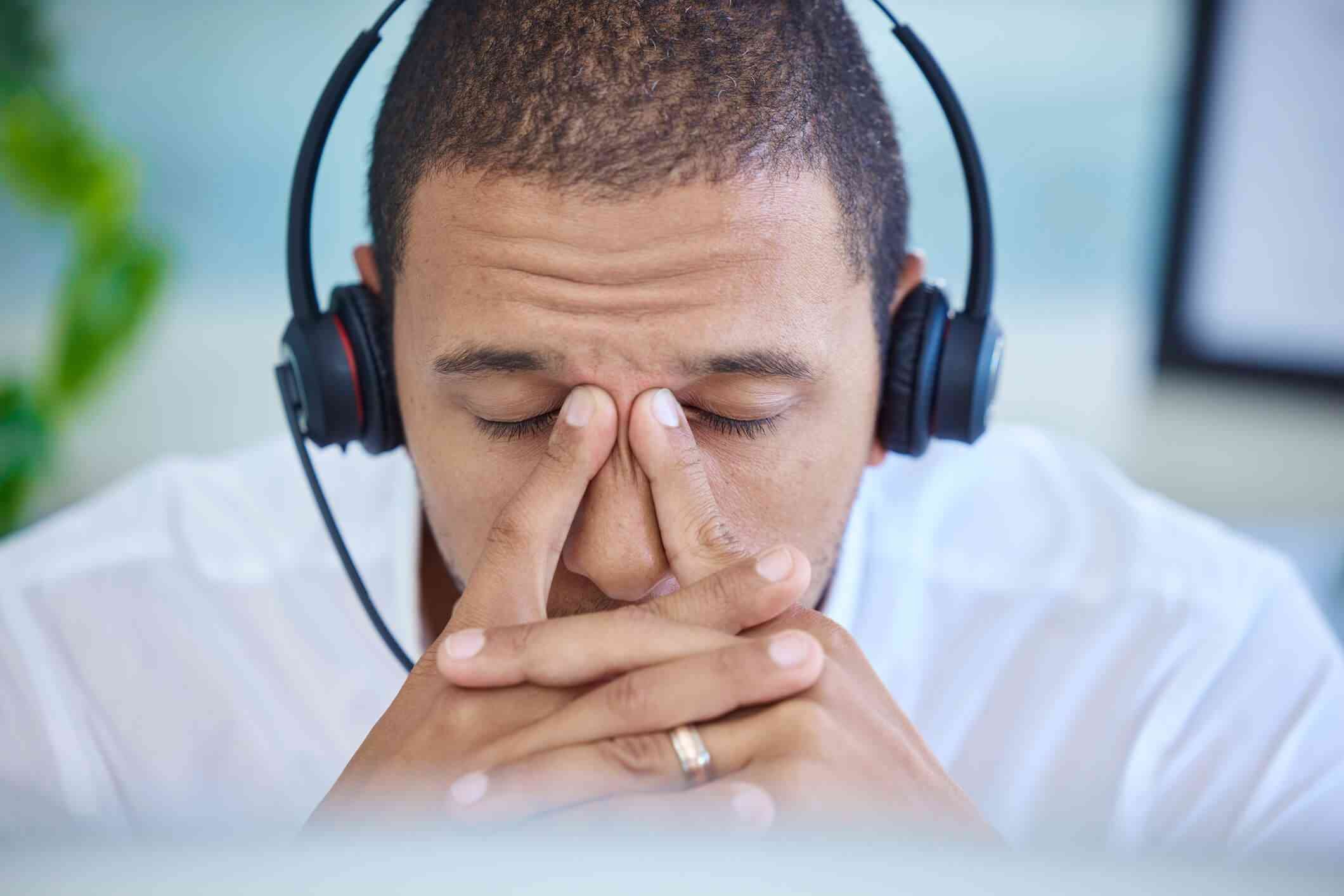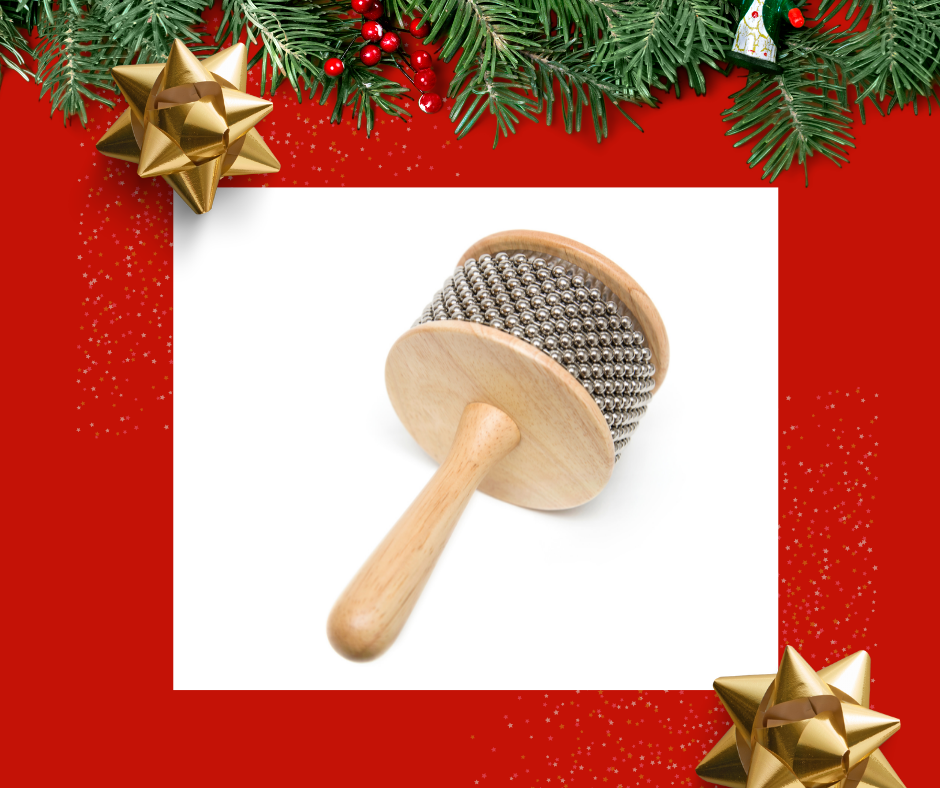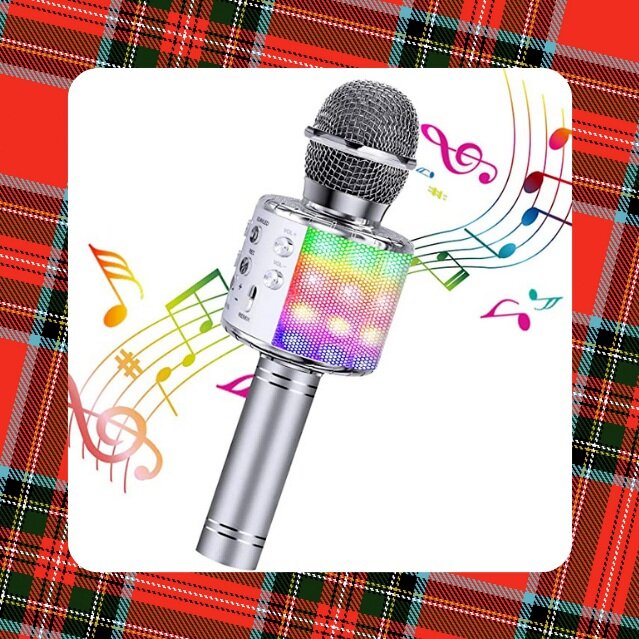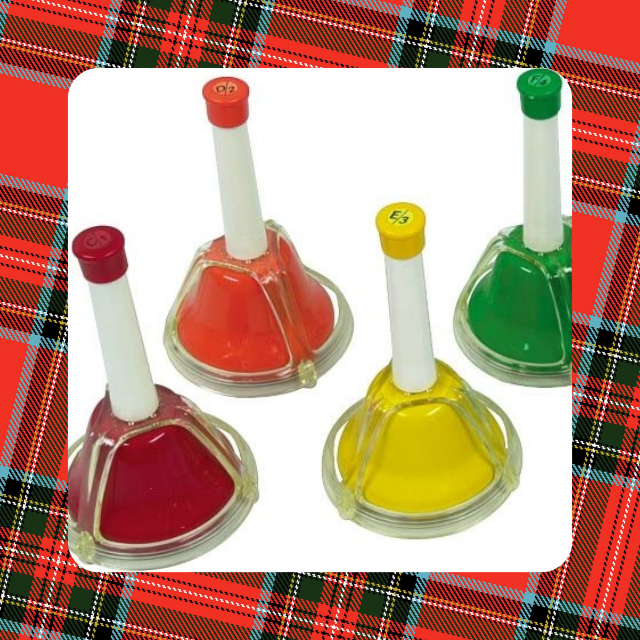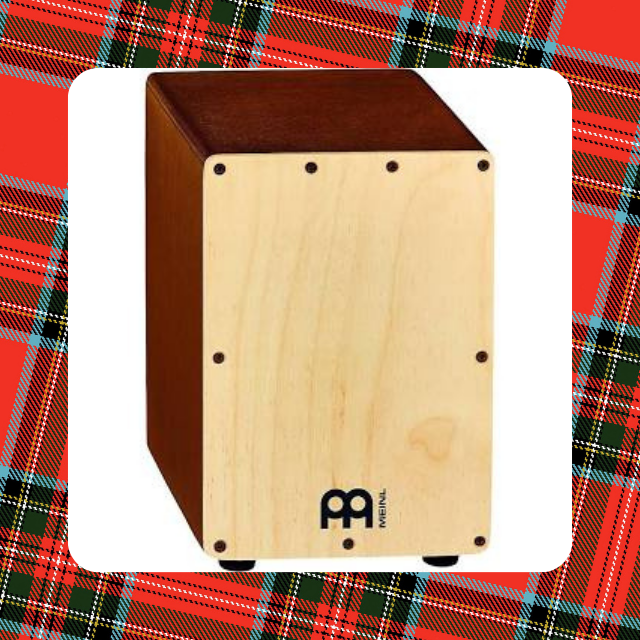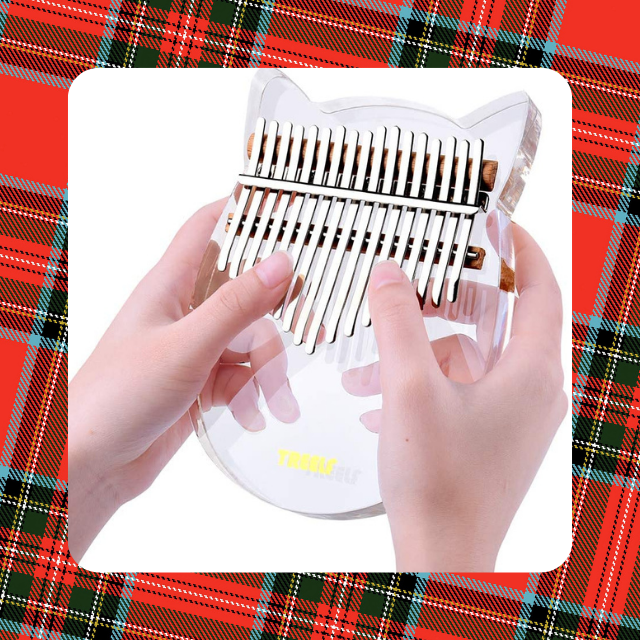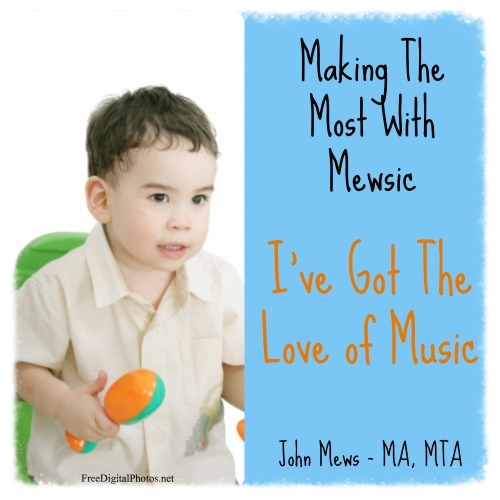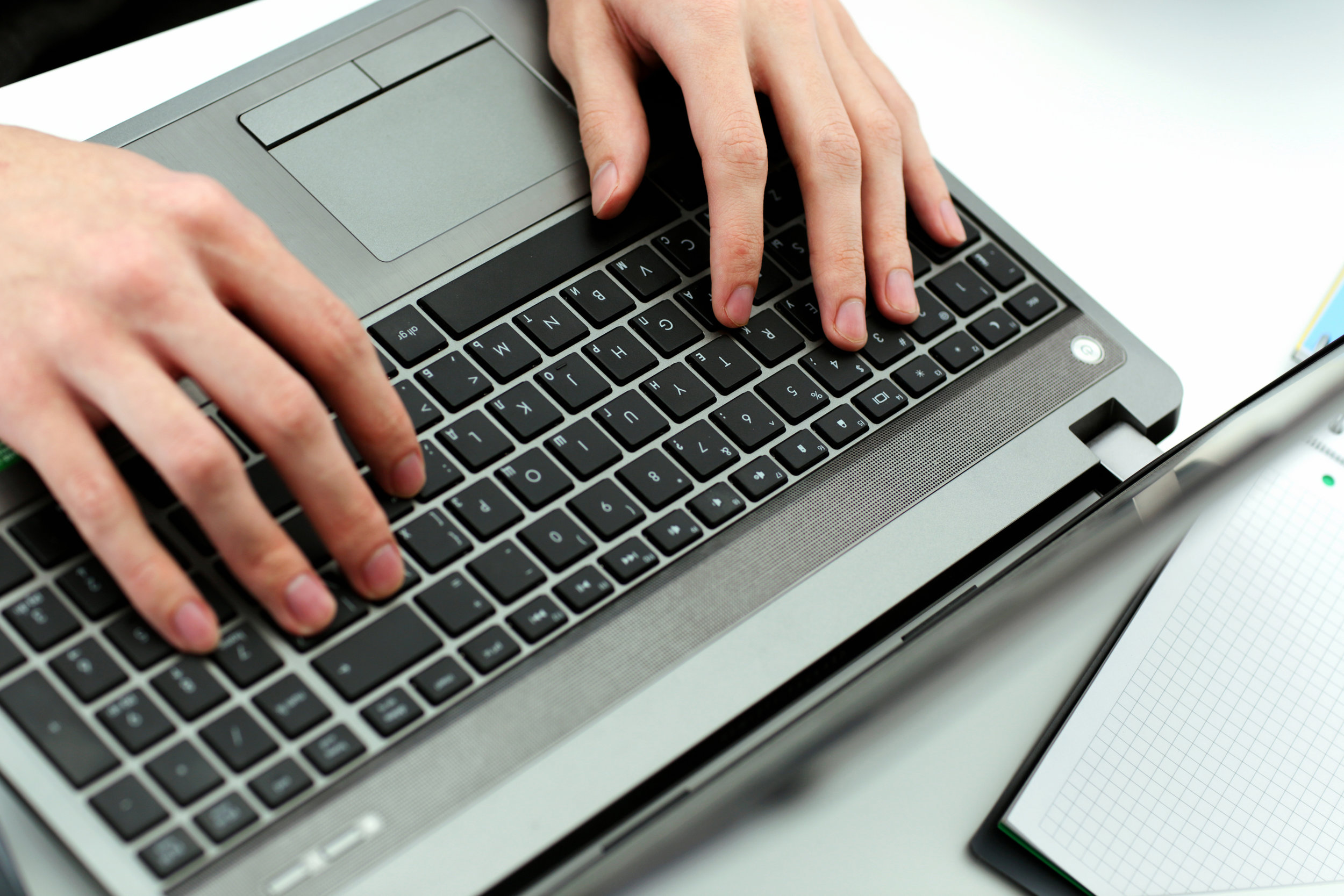
BLOGS
Educational blogs for parents and professionals
The Importance of Gratitude and Music in Mental Health Wellness
We are in the midst of one of the biggest holidays in the United States, Thanksgiving. Many families traditionally host family dinners and create memories and focus on things that they are grateful for during this holiday season. As a marriage and family therapist as well as music therapist, in our practice at Mewsic Moves we focus heavily on the power of gratitude and incorporating music as it is an important element of mental wellness. I try myself to practice gratitude daily to maintain optimum mental wellness.
Gratitude and music therapy are both powerful in their ability to positively impact mental and emotional well-being. I would like to outline the connection between gratitude and the impact or benefits of music in mental wellness.
Gratitude
1- Positive Psychology:
Gratitude is a central theme and focus in positive psychology. Practicing gratitude involves acknowledging and appreciating the positive aspects of life, which can contribute to increased happiness and life satisfaction. Gratitude also can trump negative or fear thoughts they cannot exist at the same time.
2- Emotional Well-Being:
Having consistent practice of gratitude has been linked to improved emotional well-being. Expressing thankfulness can reduce stress, enhance mood, and contribute to a more positive outlook on life. Research has shown that consciously practicing gratitude can reduce feelings of stress and anxiety. In fact, studies have found that a single act of thoughtful gratitude produces an immediate 10% increase in happiness, and a 35% reduction in depressive symptoms.
3- Social Connection:
Gratitude often involves recognizing the contributions of others. This can strengthen social bonds and relationships, fostering a sense of community and support which is important in mental wellness.
4- Mindfulness and Presence:
Gratitude practices often encourage individuals to be present in the moment and become mindful of the positive aspects of their day to day lives. This can help reduce anxiety and promote a sense of peace.
Music Therapy
1- Emotional Expression:
Music has the power to evoke and express a wide range of emotions. Music therapy can serve as a channel for individuals to express and process complex feelings, including gratitude either through playing or listening to music.
2- Stress Reduction:
Listening to or creating music has been shown to reduce stress and anxiety. Music therapy provides a structured and therapeutic environment for individuals to engage with music as a means of relaxation or mindfulness. Get your free meditation download here from our amazing music therapist, Zach.
3- Enhanced Mood:
Music has the ability to influence mood and emotions. Music therapists use music interventions strategically to help individuals first validate and then shift their emotional states, working on achieving a more positive and uplifted mood.
4- Connection and Communication:
For individuals who may struggle with verbal expression, music can serve as a powerful means of communication. Music therapy facilitates connection and self-expression, even for those who find it challenging to convey their emotions verbally. Mewsic Moves offers multiple groups for clients to connect.
5- Cognitive Benefits:
Music therapy has cognitive benefits, such as improved memory, attention, and problem-solving skills. These cognitive enhancements can contribute to a more positive and empowered sense of self. Some music therapists are also trained in Neurologic Music Therapy (NMT) which specialize in working with clients with neurologic conditions such as Autism, Alzheimer’s, Parkinson’s and more that focuses on the cognitive benefits of music on the brain. All of our therapists are trained in NMT.
6- Community and Support:
Participating in music therapy sessions can create a sense of community and support. Group music-making or shared listening experiences foster a feeling of belonging and shared purpose. At Mewsic Moves we have multiple groups that focus on the importance of community connection and support such as: Glee Choir, Rock Band, Music in Recovery, Musical Minds and more. Click here to view our group supports.
7- Therapeutic Relationship:
The therapeutic relationship between the music therapist and the individual is crucial. The therapist uses music to create a safe and supportive space, allowing individuals to explore and process their emotions, including gratitude.
How to Integrate Music in Your Gratitude Practice?
1- Gratitude Journals with Musical Elements:
Integrating music into gratitude practices, such as keeping a gratitude journal, can enhance the experience. Individuals might reflect on moments of musical joy or create playlists that represent things they are thankful for.
2- Expressing Gratitude Through Music:
Music can be a unique and creative way to express gratitude. Composing a song, playing an instrument, or even selecting a meaningful piece of music can serve as a personal expression of thanks.
3- Mindful Listening Practices:
Incorporating mindfulness and gratitude into music listening experiences can deepen the therapeutic impact. Paying close attention to the nuances of the music and appreciating the auditory journey can enhance the mindfulness aspect of gratitude.
4- Music Playlist of songs to reflect gratitude:
Making playlists on your smart phones or devices of songs that reflect gratitude can be an easy way to reflect on gratitude through music and songs from your favorite artists.
In summary, both gratitude and music therapy contribute to emotional well-being and can be integrated for a holistic approach to mental health and wellness. The combination of these practices can offer individuals unique and meaningful avenues for self-expression, connection, and optimum mental wellness.
We’d love to hear from you…What is your favorite gratitude song?
Mewsic Moves offers individual as well as group therapy support to help clients optimize mental wellness. We offer a FREE 15 minute consultation and look forward to supporting you. Click here to schedule your FREE consultation.
Harmonizing with Hope: How the Magic of Music Can Alleviate Fall Depression
Fall is one of the most beautiful seasons of the year, with its colorful leaves, crisp air and recreating many fall family favorite food recipes. I know mine is anything pumpkin! However, for many people, it is also a time of increased sadness, anxiety, and depression. Seasonal Affective Disorder (SAD) affects around 5% of the American population, with symptoms ranging from low mood to fatigue, irritability, and sleep problems. According to the American Psychiatric Association, “SAD typically lasts about 40% of the year and is more common among women than men.”
If you are feeling down during the fall season, one of the simplest and most effective ways to boost your mood is to listen to or play music. In this blog post, we will explore how music can help alleviate fall depression and provide tips on how to create the perfect fall playlist.
Music boosts your mood and releases endorphins
Listening to music has been linked to the release of endorphins and natural chemicals that trigger a positive feeling in the body. This is why music has such a powerful effect on our mood and emotions. By listening to uplifting and upbeat music, you can stimulate your brain to release endorphins, which can help counteract feelings of sadness, anxiety, stress and more. Playing an instrument can also have the same effect but you do not need to be a musician to benefit from its positive effects.
Music can reduce stress and anxiety
Music therapy has been shown to be an effective treatment for depression and anxiety. Studies have found that listening to calming music can help reduce stress hormone levels in the body, such as cortisol, which can contribute to feelings of anxiety, tension and stress. Creating a playlist of relaxing music on your iPhone or smart devices can help your body and mind to unwind and relax, reducing stress and anxiety levels. For more information on how music can help boost your mental health check out this article from the JED Foundation. Click Here for article
Music can evoke nostalgia and positive memories
Music has a powerful association with memories, and certain songs or genres can evoke positive memories and emotions. By listening to music that reminds you of happy times in your life, you can boost your mood and increase feelings of joy and happiness. From childhood classics to favorite college tunes, there is a wide range of music that can evoke a sense of nostalgia and positivity. I know when I listen to the Muppets theme song it immediately brings a smile to my face.
Music can improve your sleep quality
Sleep problems are a common symptom of depression and anxiety, and poor quality sleep can exacerbate these symptoms. Listening to calming music before bed has been shown to improve sleep quality and reduce sleeping problems such as insomnia. According to the Sleep Foundation, “Music has been shown to decrease levels of a stress hormone called cortisol. Music triggers the release of dopamine, which can boost good feelings at bedtime and may help manage pain”. To help your body and mind unwind before bed and to improve your sleep quality, pre-select some relaxing sounds or songs that you can put on a playlist and play while you start to settle in. Don’t forget to put your earbuds in as your calming music may be a distraction to your sleeping partner. Not everyone responds to music in the same way.
Music can provide a sense of connection and community
Music has the power to bring people together and create a sense of connection and community. By attending concerts, listening to live music, or even joining a choir, you can create a space where you feel connected to others through the shared experience of music. This social support can be an invaluable tool for combating feelings of loneliness and isolation, which are common in fall depression. If you are unable to find a community music group you can start to create musical moments with your family by creating a family dance party playlist, which is always fun and entertaining.
Music is an underrated but powerful tool for combating depression and improving mood and emotions for those struggling with mental health conditions and especially during the fall season changes. By creating a playlist of uplifting, calming, and nostalgic music, you can provide yourself with a simple but effective way to boost your mood, reduce stress and anxiety, improve your sleep quality, and create a sense of connection with others. So go ahead, create your ultimate fall playlist, and see how music can improve your mental health and wellbeing this season. Or if you are a musician, get out your guitar, sit at the piano and get a pot/spoon from the kitchen to create some rhythm and create a family band and rock it out through the changes of the fall.
Did we miss anything out? Let us know how music helps you get through the possible challenges of the Fall season. Also, we’d love to know some of your favorite calm songs that we can collect to create a playlist together.
For more information contact:
John Mews, LMFT, MT
CEO & Founder - Mewsic Moves
Licensed Marriage and Family Therapist
Music Therapist
Email: john@mewsicmoves.com
Phone: (818) 877-6797
Web: www.mewsicmoves.com
Happy Holidays? 5 Ways to Maintain Optimum Mental Wellness During The Holidays
Happy Holidays!? Or is it? December has arrived, “Tis the season to be jolly?”. This is a time of the year we will be bombarded with messages of “joy, spirit, and much more, but it is also a time of the season when many people experience the complete opposite such as loneliness, depression, anxiety and more…
According to the National Alliance on Mental Illness, 64% of people reported being affected by holiday depression. loneliness, stress, anxiety, and depression to name a few, are a reality for many during this holiday season. If you or any of your loved ones are experiencing these emotions, you are not alone. Here are 5 ideas we would like to share with you to help you survive and make the best of the upcoming holidays.
1. Music can be a distraction, why not learn how to play an instrument?
According to a study by Spotify, after playing a musical instrument, 89% of adults experienced increased feelings of happiness and relaxation. A third of participants noted that playing an instrument gave them a sense of purpose, confidence, and self-worth. If you are interested in learning an instrument, having a teacher will also provide an opportunity to make social and musical connections with another person who is there to support you! In this day and age, it is also common to learn an instrument through Youtube or other programs, (my nephew learned how to play guitar throughout the pandemic on YouTube).
Here are 4 recommendations if you would like to learn how to play a new instrument:
Try Take Lessons: Take lessons offers free live group lessons as well as 1:1 lessons that start at $1 an hour!
Try MasterClass: This program offers courses that are led by well-known instructors and even celebrities from all spectrums of the musical world.
Try Skillshare: Skillshare has over 27,000 classes available (including 2,000 free ones), it is a huge resource for online education almost anything, but is very ideal for learning about music or a musical instrument!
Try Udemy: Udemy is an enormous platform with a wide variety of subjects to learn about. If there’s an instrument you’re eager to play, even a less common one, it’s most likely here! Each course is designed and presented by an industry professional. Lessons start from $11.99.
2. Volunteering for a service program
In the documentary, Selena Gomez: My Mind and Me , Dr. Vivek Murphy discusses the concept of loneliness and how to take steps to support loneliness. He notes that what truly matters is the quality of connections we have with one another. In situations where we feel like we cannot be ourselves, it tends to disconnect us and distance ourselves from others which can lead to feelings of loneliness and/or isolation. In his research, Dr. Murphy emphasized how important it is to be of service to others. Service is one of the most powerful antidotes to loneliness and/or depression. Dr. Vivek Murphy concludes, “We reaffirm to ourselves that we have value to bring to the world”.
5 volunteer organizations we suggest:
Meals on Wheels: Meals on Wheels is an organization that works to better the mental, emotional, health, and economic well-being of Americans in need, especially seniors. They constantly work towards their vision of ensuring that every American senior can enjoy a nourished life with freedom and dignity. Their mission is to make efforts to stop anyone going hungry or feeling lonely.
Insight Heart Foundation: Insight Heart Foundation is an organization providing essentials to vulnerable adults and children within low-income communities in Canada. They work to provide clothes to people who are homeless, school supplies for children, provide transportation for seniors, and much more.
ClimateScience: Climate Science is a UK-based organization driven by volunteers from all around the world! It is a place for people to learn about realistic solutions to climate change and resources to work together and contribute to our environment effectively!
Resource of 25 NGOs in Asia: Interested in contributing to communities in Asia? This website has a fantastic list of non-profit organizations to volunteer or donate to that include a variety of countries and needs
Peace Corps: A U.S. government program that provides volunteer opportunities to over 60 countries all over the world in continents such as Africa, Europe and Asia!! It does not charge people to volunteer, and provides meaningful work to support developing communities.
3. Tap Into Your Creativity
Being alone can be an opportunity for us to tap into our creativity! According to Shrein Bahrami, therapist and author of The Loneliness Companion, “being alone allows more freedom to choose to make time and space for a creative activity without external pressures. If we allow ourselves to connect to our emotions, we can choose to feel and express them safely through a creative outlet which can be healing and meaningful.
Here are 4 creative outlets:
Write a song: The idea of writing a song may be intimidating, but the process of writing a song can be exhilarating and fulfilling! . This link will give you easy steps to write your own song to express how you are feeling (even if you do not have much musical experience).
Make a painting/drawing: Drawing or painting can be a great positive distraction. This link provides tips on how to start drawing or painting even as a beginner.
Write a story: Not only can we write about how we’re feeling, but we also can write an alternate reality that reflects how we feel or how we want to feel. This link provides many tips to start writing your own authentic story!
Write a poem: Don’t want to commit to writing a long story? Try writing a short poem! You can even try challenging yourself to make a poetry journal. Creating a poetry journal could keep you accountable to constantly create something, while also giving you a way to reflect on how you once were and how far you’ve grown. This link guides you through starting to write your feelings and thoughts into a personal piece of poetry.
Keep in mind that when tapping into our creative outlets, aiming for perfection is not the main goal. The key goal is to process how you are feeling and turn it into something you can hear, feel, see, or touch. Through this we provide a sense of accomplishment and value in our lives.
4. Move and Dance!
It has been proven that moving reduces stress, boosts self-esteem, relieves feelings of depression, and so much more. (Bruce, Debra 2022) When we exercise, our body releases chemicals known as endorphins which trigger positive feelings in the body! (I love to crank my favorite songs and dance in the kitchen or in the shower).
Here are 4 movement and dance exercises:
Plan a thematic walk: Walking during the cold weather can be tedious and depending where you are located can be dangerous. Depending on where you are located, adjust the setting, and try to go out for a little walk to let your mind and body reset. This link will provide some ideas on how to make your walk a little more exciting.
Dance to a Video: An in-person dance movement class can be so fun but sometimes it’s hard to find one! This web resource provides a 30 minute “all-level” cardio dance workout! Get those endorphins pumping and enjoy moving and dancing to upbeat music! “Mewsic Moves”!
Stretch: Stretching is important for our minds and bodies. It helps improve flexibility which supports our physical performance in other daily physical activities. Stretching also brings our thoughts to the present moment which can be very beneficial to our mental health. This video offers support to individuals of all levels and ages to start stretching our bodies which overall impacts our mental wellness.
Hiking: Hiking is an excellent form of exercise that connects ourselves back to nature. Not only can we gain the feel-good endorphins from moving, but we also can gain perspective on how there is so much beautiful life around us. Hiking also has benefits for our heart, balance, and allows us to disconnect from all the outside noise. This link organizes trails for you whether you’re a beginner or an expert.
Not only do we encourage you to move, but music is proven to help motivate our bodies and minds to move at a steady pace for a longer period of time. (Thaut, 2015). Click the link below to see our holiday post from last year that includes a variety of songs to add to your movement playlist!
5. Join a social group meaningful to you
It can be challenging to put yourself out there, but a rewarding way to reduce the feelings of loneliness is to make an effort to connect with other people. Like Dr. Vivek Murphy said, one of the greatest elements of life is human connection. Taking the time to listen to someone and practice empathy can help us feel less alone, connected and be a positive presence for someone else. One way to connect with others is to join a club! Finding a group that has similar interests as our own can be a great start to making meaningful connections.
Here are 4 resources to various clubs:
Join a book club: Reading is an awesome way to learn, grow, and escape into an alternate reality. It gives us the opportunity to transform our everyday life. Taking the opportunity to talk to people about a book that you just read and enjoyed can be even more transformative! This resource is a reading program that is a worldwide digital version of a local book club. If you can’t find a book club in your community, this is a great way to connect with people from all over the world!
Join a singing group: Music is a wonderful way to deeply connect with people. This link takes you to an amazing group called, “The Sofa Singers”. Developed during the pandemic, this group was created with the mission to have an inclusive and supportive worldwide community that sings together online. Regular sessions take place at 7:30pm Tuesday and 11am Friday every week (GMT). Similarly, Mewsic Moves transitioned their Glee Choir for adults with neuro-divers, intellectual and developmental needs during the pandemic to an online zoom platform to help with community connection.
Join a gardening community: Gardening can make us feel more at peace and practice mindfulness by being present. It requires us to focus our attention on the immediate task allowing us to feel better in the moment. What’s even better is being able to do this while also having a place to share our little plant treasures with other people. Gardening can also be quite difficult if we don’t know the best way to take care of our plants. This resource link provides 10 online gardening communities!
Join a music appreciation community: A feeling possibly better than listening to your favorite song is having someone who loves that song just as much as you and listening to it together! There is ample evidence of how music adds life to our communities, engages our brains, and strengthens our sense of belonging and connection with others. (Playcore, 2020). This link directs you to a variety of music appreciation groups near you.
Mewsic Moves would also like to take this opportunity to introduce you our own music-making communities, Glee Choir and Musical Minds.
Glee Choir is our music therapy program for adults with neuro-diverse, intellectual and developmental special needs. The group is a safe space for our adults to share their love for music, while also working on a variety of goals such as building self-esteem, expressing emotions, social skills, and much more. We offer this program in person as well as via zoom to help support adults that are located in remote areas where programs may be less available.
Musical Minds is our group therapy program for individuals with Parkinson’s and/or Alzheimer’s to experience music-making together in a fun and safe environment, while also working on a variety of goals such as improving cognitive functioning, memory, self-expression, motor skills, and much more. We also like to include partners and family members into this program to continue to focus on family connection.
Lastly, we want all of you to know that you are not alone in these feelings. Mewsic Moves felt so deeply about this that we produced a video during the pandemic that focused on mental wellness and invited music therapists from all over the world to join in a musical message to let others know that whenever you are feeling lonely, anxious or depressed, and more… “You are Not Alone”
The next few months can be extremely difficult and draining for some. We want to validate that this can be a very tough time for many and we are here to help support you and hope some of these resources will help you survive this difficult time of the year.
Peaceful and Well Wishes this Holiday Season. You are not alone. Also if you need additional support we offer a FREE 30 minute consultation and offer counseling sessions to work on strategies to make it through the holiday season.
LET’S BE SOCIAL:
PLEASE SHARE, PIN, LIKE AND LEAVE YOUR COMMENTS BELOW AS WE LOVE TO HEAR FROM YOU!
Holiday Stress, Mental Health and Music Therapy
During the holidays, we often find ourselves under extreme pressure from media, advertisements, and sometimes even family to have high expectations of joy, family values and gratitude, but sometimes this part of the calendar year can often be taxing and painful for some. We want to make sure you are gentle with yourself and have some musical resources to help you maintain your positive and healthy mind throughout this challenging time of the year. Our amazing music therapist, Kate would like to share a few music interventions we use in our mental health music therapy groups that you can keep at your disposal and practice when things seem overwhelming during the holidays.
1. Playlists
Create the perfect playlist for boosting your mood or even validating your emotions. Music is inseparable from emotion. Meaning, that if you listen to music that you find uplifting, you can try to refocus your energy into positivity. Listening to music has been proven to lower stress hormones such as cortisol. It also helps regulate your autonomic nervous system which controls your blood pressure. One way to start making playlists is to find a mood or theme and create playlists that encompass that mood or theme. Then, you can use it as a tool when you’re feeling down or stressed. Music can be a support, companion and an outlet, plus much more.
Here is an example of our 5 top Playlist titles and some song examples for each: (click on song titles to listen)
Inspiration Songs
A Change is Gonna Come - by Sam Cooke
Cranes in the Sky - by Solange
Gratitude Songs
Gratitude - by Earth, Wind and Fire
Days - by the Kinks
Releasing Anger Songs
So What - by Pink
Break Stuff - by Limp Bizkit
Distraction Songs
Them Changes - by Thundercat
Wait for a Moment - by Vulfpeck
Nostalgia Songs
Choose songs that remind you of the past and help you reminisce good time. You may also choose songs you listened to when you were 18, or songs you listened to 10 years ago. (Caution - be careful of grieving during these songs, its meant to help you connect to good feelings and welcome those into the present not to grieve or worry that you no longer feel this way)
2. Gratitude Lists
One practice that lends to maintaining positivity in times of adversity, is gratitude. It’s important to stay grateful for the things you receive whether it’s tangible or intangible. It helps you realize what you have rather than focusing on what you don’t have. Tony Robbins also talks a lot about focusing on gratitude as a practice. He states “gratitude and fear cannot exist at the same time” so if anything a gratitude practice can put our fear or negative thoughts on hold. To create your gratitude list, first, you can put on your uplifting playlist you created from the above playlist example. Then, you can start your gratitude lists out small with three things you’re grateful for and write them down. A great time to do this is in the morning when you wake up, or at night before you fall asleep. Challenge yourself to not repeat items on your lists. Some people create a notebook or a journal just dedicated to gratitude. Then, when you’re feeling down, you can read through all of the things you’re grateful for.
Here are some songs that you can use while practicing gratitude: (click on song titles to listen)
What a Wonderful World - by Louis Armstrong
In My Life - by The Beatles
Grateful - by Rita Ora
3. Movement
Here at Mewsic Moves, we want to encourage you to move! And what a better way to move, than to music. We’re not telling you to flat out dance, although dancing is so good for you. You can move however you feel most comfortable. Moving your body to music, such as walking, stretching or dancing can help calm and regulate your emotions. It can energize you and it can even get rid of anxious energy and thoughts as many of us feel during the holiday season. What feels comfortable for you? Do you enjoy walking? If so, that bilateral stimulation provides much benefit for your body and mind. Do you enjoy stretching? It can provide stress relief, pain relief and mental clarity. Finally, dancing. It can improve cardio health, it’s gentle on the body, and it often leads to joy. Use your uplifting playlist, or create a dance playlist and find what feels good for you and your body.
Here are some songs that we suggest that will get you up off your feet: (click on song titles to listen)
Sir Duke - by Stevie Wonder
Hey Ya! - by OutKast
Electric Feel - by MGMT
Can’t Stop the Feeling - by Justin Timberlake
We want you to first of all know that it’s “OK Not to be OK” (by Marshmellow & Demi Lovato) during these next few months of holidays and the whirling emotions that many of us feel. Although it’s challenging to find contrary action in hard times, we believe in you and want to share some music resources to help you get through this holiday season. We also want to encourage you to reach out and connect with others when you feel alone or need support. We hope that some of these music resources will help and support your optimum mental wellness this holiday season.
Peaceful and Musical Wishes this Holiday Season.
Let’s Be Social:
PLEASE SHARE, PIN, LIKE AND LEAVE YOUR COMMENTS BELOW AS WE LOVE TO HEAR FROM YOU!
Top 5 Therapeutic Musical Toys For Children Of All Abilities: With Video Resources
After writing our first top therapeutic toy blog back in 2014, “TOP 10 MUSICAL TOYS FOR CHILDREN WITH AUTISM” and having it as our top read blog we continued to write again in 2020, “TOP 11 THERAPEUTIC MUSICAL TOYS FOR CHILDREN WITH SPECIAL NEEDS”. Since both of these resource lists has been such a popular read we would love to continue our holiday tradition and offer you yet another music therapy toy/instruments resource list! Plus much more this year!
Everyday we use unique, fun, motivational and engaging music instruments in our music therapy programs to help address multiple goals. Many family members and parents struggle during this time to find the “perfect gift” or “perfect toy” for the little ones on their gift lists, especially for some that have neurodiverse or developmental needs. We want to continue our Mewsic Moves resource holiday tradition and help you find that perfect musical toy(s) that provides exponential value.
This year we wanted to make our list not only beneficial but educational as well. So this year we are providing a short video that showcases one of our of amazing Neurologic Music Therapists, Zach, giving you a musical example of how we use the instrument as well as sharing some of the therapeutic value in each instrument. We know you will find much value in this years musical therapeutic toy list!
1. Cabasa
The cabasa is a versatile and unique instrument used in latin music that many children are drawn to as many have never seen one or used one before. It has bright shiny chains of beads that surround it and make a sound similar to a maraca as you roll the beads around the instrument. The cabasa ranges from large or smaller sizes as well as plastic or wood. We prefer the larger wooden cabasas as they provide better weight for proprioceptive input and pressure.
Cabasa can support:
Sensory processing & integration
Regulation
Body awareness
Speech and communication
Palmer grap control
For more details or to buy click here
2. Xylophone
The xylophone is one of our most used instruments as its transportable, easy to carry, and mimics the tonality and notes of a piano. The xylophone that we are adding to our list this year is one of our favorites as it can fold in half and some come with a carrying case. You can use one side as the major scale (similar to
white notes on piano), and the other side (the black notes) can be used to improvise songs together on a pentatonic scale which is fun to use as there are “no wrong notes”. We also love to add colored stickers to our xylophones and play music together through colors versus actual notes. It makes playing easier, fun and much more successful.
Xylophone can support:
Sustained attention
Joint attention
Communication skills (completing circles of communication)
Cognitive and impulse control skills (stop and go)
Turn taking
Eye-hand coordination
Gross motor skills
For more details or to buy click here
3. Ocean Drum
The ocean drum comes in many sizes and we prefer smaller size that can fit in a younger child’s hands. The ocean makes a beautiful and peaceful sound of the ocean as you tilt it back and forth. It can also create loud crashing wave sounds if you play and tilt it faster. The ocean drum we have chosen this year provides a visual appeal with under water display of fish and has a transparent top so you can see the beads rolling which often is a visual anchor and sensory support for many of our clients.
Ocean Drum can support:
Regulation
Sensory processing and integration
Turn taking
Cognitive control
Motor control and modulation
Sustained attention
Mindfulness and meditation
For more details or to buy click here
4. Hand/Desk Bells
Our younger clients love these bells! They are colorful and you can play them by pressing the handle or lifting them and striking them like a traditional bell. These bells also have a color sequence that aligns with the Cmajor scale that we use to work on color matching, sequencing, early music education and much more!
Hand Bells can support:
Working memory
Sequencing
Turn taking
Communication
Cognitive skills - colors and counting
Early music education
Early reading skill development
For more details or to buy click here
5. Gathering Drum
The gathering drum is a fun communal drum that sits on the floor and is perfect for circle time or gathering around with friends or family to join and play together. We prefer the larger gathering drum as it holds much space for friends to join around and it also provides a large deep base sound that fills the room as well as deep into your body. The gathering drum is one of our favorite drums to use as it can also help support impulse control as it has a large range in sounds from big and vibrational to more subtle and soft.
Gathering drum can support:
Cognitive control
Joint attention
Sustained attention
Modulating emotions
Self regulation
Co-regulation
Provides proprioceptive feedback
Speech & communication
Social goals
Bonding
For more details or to buy click here
I hope you find value in this list as well as the educational videos that we have provided to help give you some guidelines on how to use these instruments in a therapeutic way. We are always excited to share our resources with you to use with your family at home or with your clients in your office or schools. Music is truly motivational and transformational and we love to share the gifts of music with you. Please feel free to reach out to us if you have any questions about the appropriateness of any instruments with your child or clients.
All of us at Mewsic Moves wish you and your family a musical holiday!
Gift the gift of music this holiday season.
Let's be social:
PLEASE SHARE, PIN, LIKE AND LEAVE YOUR COMMENTS BELOW AS WE LOVE TO HEAR FROM YOU!
Top 11 Therapeutic Musical Toys for Children With Special Needs
After writing my first top therapeutic toy blog back in 2014 “TOP 10 MUSICAL TOYS FOR CHILDREN WITH AUTISM”, it has become the number one most read blog and resource in my entire list! So it's time for an update!
I get multiple emails and questions directly from parents and therapists all the time asking how they can use their instruments at home as a therapeutic tool or what instruments they should buy to help with their child/clients therapeutic goals.
This is the time of the year when many families and friends struggle with what toys or gifts to give to their little ones and what a better way than to get them something that is both fun and therapeutic.
These are the top 11 favorite instruments that I use in my sessions that continues to offer so much therapeutic value, fun, engagement and overall success in each of my clients therapy goals.
1 - Floor Drum
Drums vary as much in price as they do in shapes and sizes, sounds and color! I use many varieties of drums in my sessions but I want to share this specific remo drum with you. This drum is sturdy, strong and has great acoustic sounds and vibration. This drum can sit easily on the floor and be played individually or together with 2 or 3 friends as a gathering drum. Oh, and did I mention it's affordable?!
Drums can help support:
Impulse Control
Eye-Hand Coordination
Turn-Taking
Focus and Attention
Auditory Skills
Regulation Skills
In a group it can help with social-emotional goals, non-verbal social cues and skill development
For more details click here
2 - Karaoke Microphone
Microphones can be so much fun to work on multiple goals from speech and language to increasing self-esteem. I prefer using microphones where you can manipulate the sounds to keep my clients engaged in the music process, to keep it fun and therefore better engagement and participation in achieving the therapeutic goals.
Microphones can help support:
Speech and Communication Skills
Self-Esteem
Social-Emotional Development
Creative Expression
Social Cues and Skills
For more details click here
3 - Shakers
Shakers are a staple in my music therapy instrument options. Shakers are always a fun welcome to any music activity in my clients sessions. Shakers and maracas are interchangeable in most of my sessions.
Shakers can help support:
Social Skill Development
Gross and Fine Motor Skills
Eye-Hand Coordination
Educational Goals - colors, counting, etc.
For more details click here
4 - Lollipop Drum
These drums are a favorite choice for many of my younger clients. I choose the lollipop drums as they are very light weight and have a handle to help guide or sustain more controlled movements in my music therapy sessions.
The Lollipop drum can help support:
Eye-Hand Coordination
Gross Motor Skills
Visual Perception and Eye Tracking
Regulation Skills
Social Skills and Cues
Joint Attention and Play
For more details click here
5 - Bells
I had an intern many years ago that introduced these bells to me and I have used them ever since. Children love these bells as they are colorful and you can play them both by ringing them or tapping the top of the handle.
Bells can help support:
Early Reading Skill Development
Educational Goals - colors, counting and letter recognition
Early Music Education
Social Skills
Focus and Attention
For more details click here
6 - Steel Tongue Drum “Happy Drum”
This is a new addition to my instrument collection and a favorite by clients of all ages. This drum sits on your lap and is easy to play as the tones are in a tonal scale that is always in harmony as you play.
Tongue drums can help support:
Mindfulness
Meditation
Regulation skills
Social - Emotional skills
Eye-Hand coordination
Self-Expression
For more details click here
7 - Cajon
The cajon is also a new addition to my musical toolbox. This is such a fun instrument for all ages; children love the idea of sitting on an instrument and being able to play it in a variety of ways and feeling the rhythmic vibrations throughout their body. The cajon is a beautiful strong instrument and comes in various sizes. I prefer the larger sizes that can comfortably allow both my older adult clients as well as my younger clients to safely sit on it and play.
Cajon’s can help support:
Self-Expression
Eye-Hand Coordination
Social Cues and Skills
Self Regulation
Gross and Fine Motor Skills
For more details click here
8 - Kalimba
The kalimba is also known as a marimba and used in many African musical cultures creating a beautiful melody by plucking the metal keys with your thumbs and fingers. This instrument is very easy to play and has beautiful relaxing tones.
Kalimba can help support:
Fine Motor Development
Self-Expression
Meditation and Mindfulness
Emotional and Self-Regulation
Eye-Hand Coordination
For more details click here
9 - Xylophone
The xylophone is a staple instrument in my music therapy practice for children especially and adults alike. The xylophone is a great choice as it is transportable, affordable, mimics the notes of a piano, and versatile. Xylophones also come in a variety of sizes, materials and colors. For younger children I like to buy those with bright colors to make it more fun, but the one I’m choosing this year is a “collapsable” xylophone which makes for easy carrying and storing. I also tend to put colored stars on the xylophone to help with early music education skills.
Xylophones can help support:
Early Music Education
Eye-Hand Coordination
Gross Motor Skills
Social Cues and Skills
Impulse Control
Creative Expression
Focus and Attention
Bi-lateral Movements
For more details click here
10 - Ocean Drum
The ocean drum continues to be a favorite choice for many of my younger clients. Children often love to have the control of creating their own dynamics from loud to soft wave like sounds as well as enjoying the visuals of the beads moving about in the circular drum.
Ocean drums can help support:
Focus and Concentration
Gross Motor Skills
Mindfulness and Meditation
Self-Regulation
Impulse Control
Social Cues and Skills Within Groups
For more details click here
11 - Kazoo
The kazoo is such a fun and inexpensive instrument and therapeutic tool! Kazoo’s come in many different colors and materials. For those of you who have played a kazoo you are aware that it doesn’t work by just blowing into the instrument. Your vocal cords are required to make a vibration and buzzing type of sound which is a rudimentary skill in initial speech and language goals. I use kazoo’s with many young children that are working on their initial speech goals through helping produce breath support and to engage the vocal cords into initial vocalizations and furthermore speech development.
Kazoo’s help support:
Breath Control
Speech and Communication goals
Speech production
Self-Regulation
Creative Self-Expression
For more details click here
I hope you find these 11 instruments helpful in bringing some of the therapeutic benefits of music with your children whether in your home or office. Please feel free to reach out to me if you have any questions about the appropriateness of a particular instrument for your child or client. If you are not working with a music therapist already, in most cases I can refer you to a qualified therapist in your area that can support your child’s developments through music therapy.
If you have any questions about any instruments that you currently have and how they can be used for therapeutic purposes please don’t hesitate to reach out to me as I’d love to support you and your child.
John Mews, BMT, NMT, AMFT
Founder & Owner - Mewsic Moves
email: john@mewsicmoves.com
Happy Holidays Everyone! Give the gift of music this year.
Let’s Be Social:
Please like, share and or leave your comments below as we love to hear form you!





